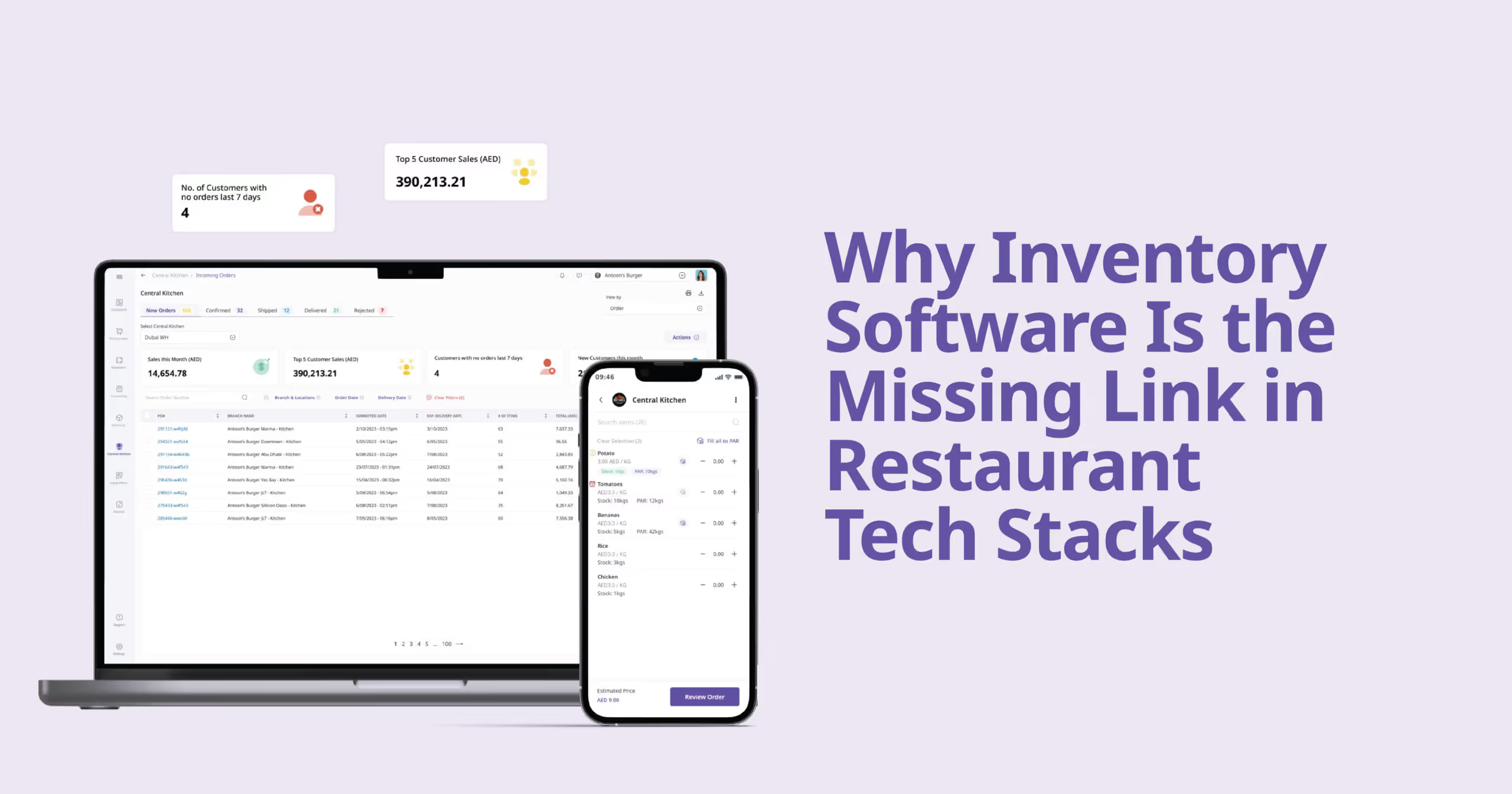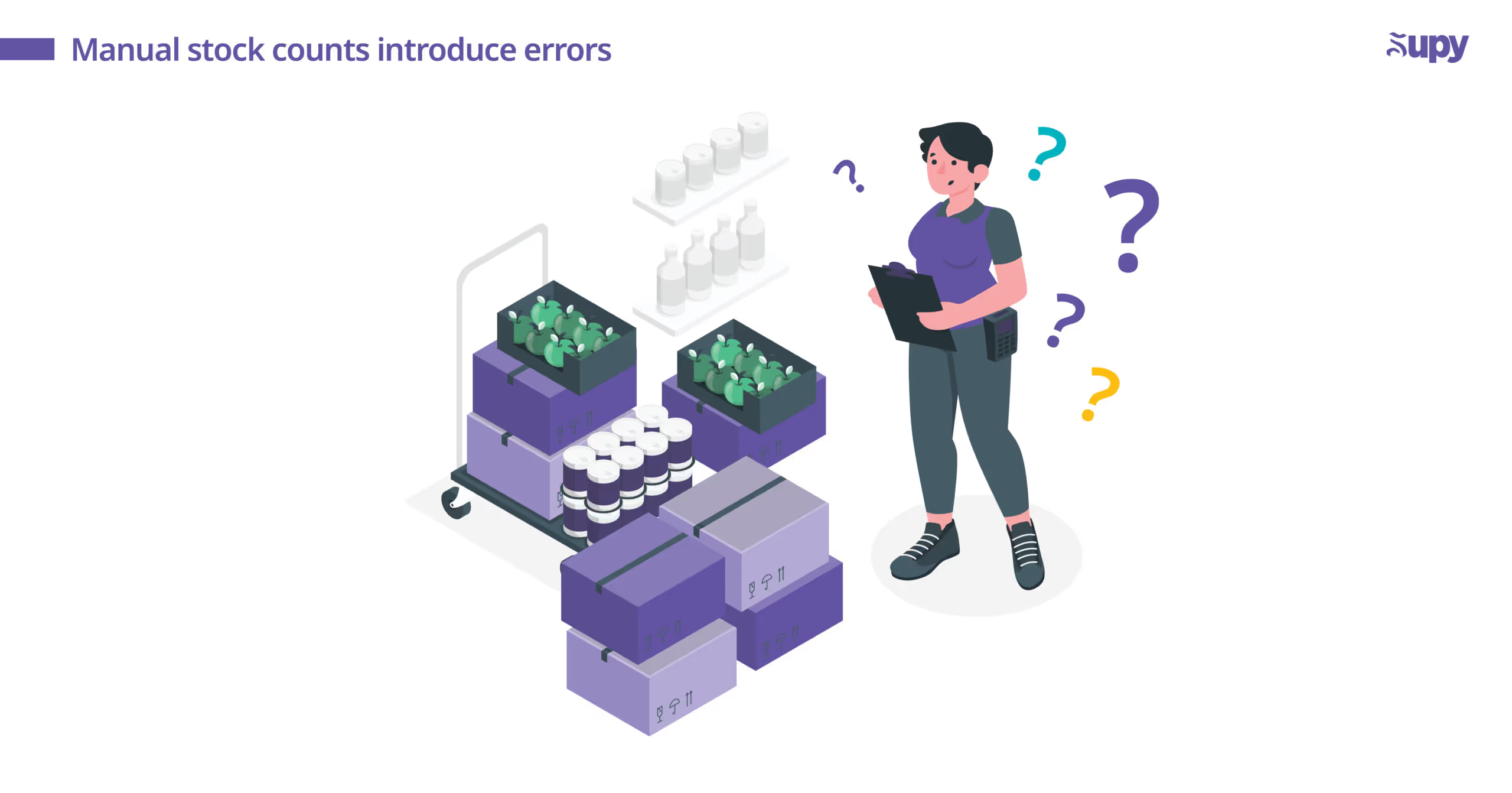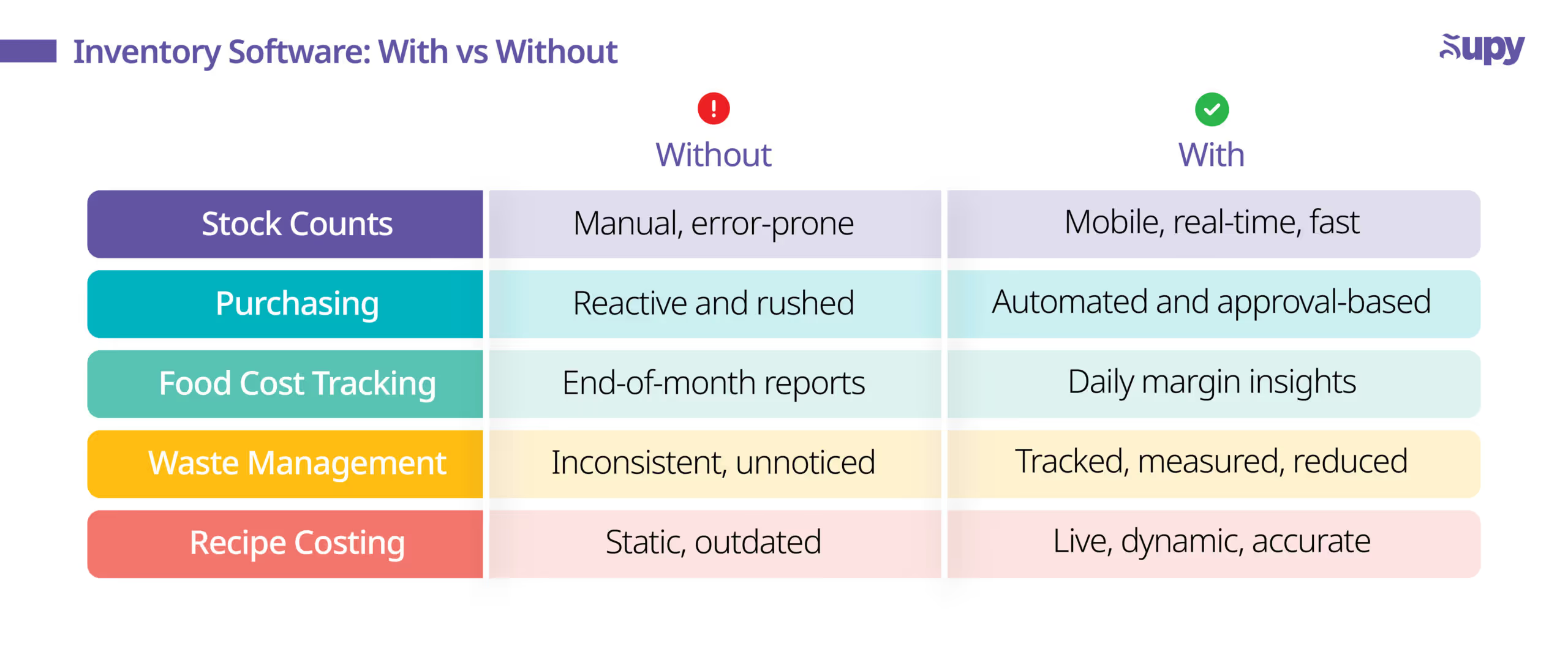Why Inventory Software Is the Missing Link in Restaurant Tech Stacks

Restaurant technology has evolved fast: POS systems, accounting platforms, QR ordering, delivery integrations, every front-of-house challenge has a tool. But behind the scenes, there is still a critical gap.
The missing piece? Inventory software for restaurant tech stacks.
Without it, operators are left relying on spreadsheets, guesswork, and outdated financial reports that can't keep pace with today's margin pressures.
Here’s why inventory software isn't just "nice to have", it's foundational.
Most Tech Stacks Cover Sales and Finance, Not Operations
POS systems record transactions. ERPs manage financials and HR. Delivery platforms expand reach.
But none of these systems are designed to give live control over food cost, wastage, or purchasing decisions.
Inventory software for restaurant tech stacks bridges this gap by:
- Tracking real-time stock levels
- Automating procurement workflows
- Standardizing recipes and portion sizes
- Delivering live cost of goods sold (COGS) reporting
- Creating operational insights from everyday actions
Without dedicated inventory software, your operations team works blind, and your margins suffer.
What Happens Without Inventory Software?

Relying solely on ERPs or POS systems for inventory creates hidden risks:
- Food cost data lags behind by weeks
- Manual stock counts introduce errors
- Purchasing becomes reactive, not strategic
- Waste goes unnoticed
- Menu engineering decisions are based on partial data
The result? Rising costs, shrinking margins, and missed opportunities to optimize.
Inventory software for restaurant tech stacks solves this by delivering real-time, on-the-ground control where it matters most: in the kitchen and storeroom.
How Inventory Software Powers Smarter Restaurant Operations
The best inventory platforms, like Supy, transform operations by making live data usable and actionable:

With inventory software for restaurant tech stacks, operators gain full visibility, faster decision-making, and stronger financial performance.
Why Inventory Software Needs to Be Purpose-Built for Restaurants
Not all inventory tools are created equal.
Generic ERP inventory modules are built for factories and warehouses, not for fast-paced kitchens.
Supy’s approach to inventory software for restaurant tech stacks is purpose-built for hospitality.
That means:
- Interfaces designed for chefs, not accountants
- Mobile-first workflows
- Focus on food cost, wastage, and real-time purchasing
- Seamless integrations with POS and accounting software
The difference is night and day, and it's what turns inventory from a burden into a strategic advantage.
Real Results: Inventory Software in Action
In the Tech on Toast podcast, Supy’s Founder Dani El Zein shared real-world examples of inventory software impact:
- A 12-outlet pizza chain saved $50,000 annually by spotting over-portioning in mushrooms.
- A 200-outlet coffee brand corrected grinder calibration, saving thousands in espresso costs monthly.
Both wins were impossible without real-time variance tracking and cost control powered by dedicated inventory software for restaurant tech stacks.
Choosing the Right Inventory Software for Your Restaurant
When evaluating inventory solutions, look for:
- Mobile stock counting
- Recipe-level cost tracking
- Purchase order automation
- Supplier management and price discrepancy alerts
- Seamless integration with your existing ERP or accounting system
Supy checks all these boxes, delivering enterprise-grade inventory software without the bloated costs or complexity.
Final Thought: Complete Your Tech Stack with Inventory Control
Every modern restaurant group invests in POS, accounting, and delivery platforms.
But without inventory software for restaurant tech stacks, you’re missing the tool that protects margins every single day.
Inventory isn’t a side task.
It’s how the best operators control cost, reduce waste, and drive profitability, and it’s why the smartest restaurant groups make it a priority.
If your stack is missing this piece, it's time to fix it.
Supy is ready to help.







